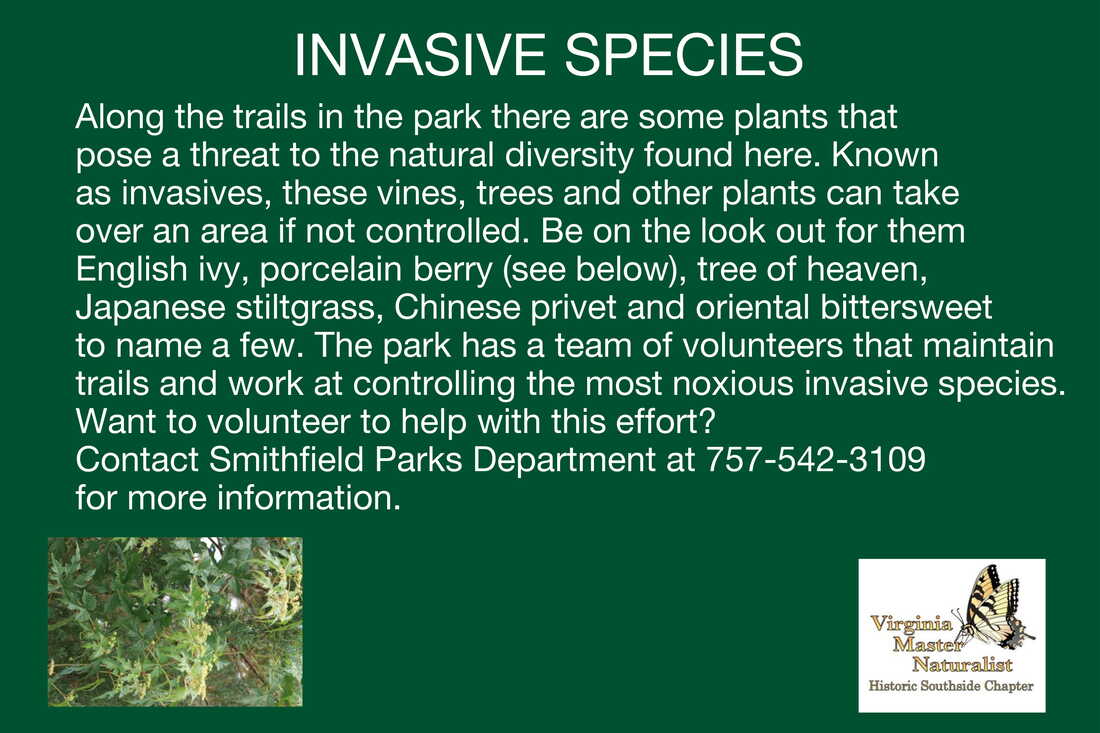Introduction
According to the Virginia Department of Conservation and Recreation, invasive plants are species intentionally or accidentally introduced by human activity into a region in which they did not evolve and cause harm to natural resources, economic activity or humans. The Virginia Department of Conservation and Recreation's Division of Natural Heritage currently identifies 90 invasive plant species that threaten or potentially threaten our natural areas, parks and other protected lands in Virginia.
Some facts to consider
Not all introduced plants are invasive plants. In fact, most introduced species do not cause problems and are often beneficial. Many introduced species are well known and economically important in agriculture and horticulture, such as wheat, soybeans and tulips. Introduced species, whether plant or animal, often do not become established outside of cultivation and, if they do, they usually have few impacts on natural communities.
According to the Virginia Department of Conservation and Recreation, invasive plants are species intentionally or accidentally introduced by human activity into a region in which they did not evolve and cause harm to natural resources, economic activity or humans. The Virginia Department of Conservation and Recreation's Division of Natural Heritage currently identifies 90 invasive plant species that threaten or potentially threaten our natural areas, parks and other protected lands in Virginia.
Some facts to consider
Not all introduced plants are invasive plants. In fact, most introduced species do not cause problems and are often beneficial. Many introduced species are well known and economically important in agriculture and horticulture, such as wheat, soybeans and tulips. Introduced species, whether plant or animal, often do not become established outside of cultivation and, if they do, they usually have few impacts on natural communities.
- The problem of invasive plants is that they proliferate and displace native plant species, reduce wildlife habitat, and alter natural processes. They also impose serious costs on our economy, which depends on benefits provided by nature.
- Invasive plants typically exhibit the following characteristics:
- Rapid growth and maturity
- Prolific seed production
- Highly successful seed dispersal, germination and colonization
- Rampant vegetative spread
- Ability to out-compete native species
- High cost to remove or control








